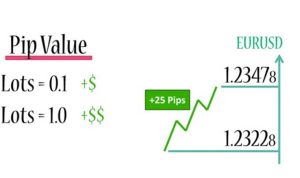In this article, we will explore the concept of Trading Forex Profit and uncover strategies and techniques that can help traders maximize their returns in the currency markets. Trading forex profitably involves buying and selling currencies with the aim of generating income from the fluctuations in exchange rates. By understanding how to analyze the markets, manage risks, and implement effective trading strategies, traders can increase their chances of achieving consistent profitability. Let’s dive deeper into the world of trading forex profit valuable insights to enhance your trading journey.
Trading forex for profit refers to the process of executing trades in the foreign exchange market with the primary objective of generating financial gains. Traders participate in the market by buying one currency while simultaneously selling another, aiming to profit from the exchange rate movements between the two currencies. This dynamic and highly liquid market provides numerous opportunities for traders to capitalize on price fluctuations and make profitable trades. Now, let’s delve into the strategies and approaches that can assist traders in maximizing their profit potential in forex trading.
Understanding Market Analysis
1. Fundamental Analysis
Fundamental analysis involves evaluating economic indicators, geopolitical events, and news releases to assess the intrinsic value of a currency. By understanding the underlying factors driving the global economy, traders can make informed decisions about when to enter or exit trades. Fundamental analysis helps traders identify trading opportunities based on the fundamental strengths or weaknesses of a currency.
2. Technical Analysis
Technical analysis involves studying price charts, patterns, and indicators to predict future price movements. Traders utilize tools such as support and resistance levels, trendlines, moving averages, and oscillators to identify entry and exit points for trades. Technical analysis provides valuable insights into market sentiment and can help traders anticipate potential price reversals or continuations.
Risk Management Strategies
1. Setting Stop Loss and Take Profit Levels
Setting appropriate stop loss and take profit levels is crucial for managing risk in forex trading. Stop loss orders help limit potential losses by automatically closing a trade if it reaches a predetermined level, while take profit orders lock in profits by closing a trade when it reaches a specific profit target. By defining these levels before entering a trade, traders can protect their capital and ensure disciplined risk management.
2. Diversification
Di versification involves spreading trading capital across di fferent currency pairs or other financial instruments to reduce exposure to any single trade. By diversifying their portfolio, traders can mitigate the impact of potential losses from one trade by capitalizing on profitable opportunities in other trades. Diversification helps minimize risk and provides a more balanced approach to trading forex profitably.
Implementing Effective Trading Strategies
1. Trend Trading
Trend trading involves identifying and following the prevailing trends in the forex market. Traders aim to enter trades in the direction of the established trend, expecting the trend to continue and generate profits. This strategy requires patience and the ability to identify trend reversals or consolidations to optimize entry and exit points.
2. Breakout Trading
Breakout trading involves capitalizing on price breakouts from established support or resistance levels. Traders monitor price consolidation patterns and wait for the price to break above resistance or below support before entering trades. Breakout trading aims to capture significant price movements that often occur after periods of consolidation.
3. Risk-Reward Ratio Optimization
Optimizing the risk-reward ratio is essential for consistent profitability in forex trading. Traders aim to identify trades where the potential reward outweighs the risk. By setting appropriate profit targets and stop loss levels, traders can achieve a favorable risk-reward ratio, ensuring that winning trades generate higher profits than losing trades incur in losses.
Conclusion and Suggestions
Trading forex for profit requires a solid understanding of market analysis, effective risk management, and the implementation of proven trading strategies. By combining fundamental and technical analysis, traders can make informed trading decisions based on a comprehensive view of the market. Implementing risk management strategies and trading portfolios help protect capital and reduce the impact of potential losses. Finally, selecting and applying suitable trading strategies that align with individual trading styles and market conditions is key to achieving consistent profitability.
As a suggestion, it is important to continue learning and adapting to the evolving forex market. Stay updated with economic news, industry trends, and trading insights to enhance your decision-making process. Practice di scipline, patience, and emotional control in your trading activities. Additionally, consider using demo accounts to test and refine your strategies before committing real capital. Continuously evaluate your trading performance, analyze your trades, and learn from both successes and failures.
With a di sciplined approach, continuous improvement, and the right mindset, traders can navigate the forex market to achieve consistent profitability and unlock their trading potential.







